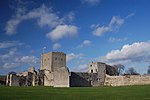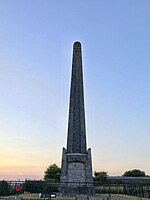Portchester Community School
1939 establishments in EnglandBorough of FarehamCommunity schools in HampshireEducational institutions established in 1939Hampshire school stubs ... and 2 more
Secondary schools in HampshireUse British English from October 2013
Portchester Community School is a mixed comprehensive community school for 11- to 16-year-olds in Portchester, England. As of January 2015, the date of the last Ofsted inspection, the school has been rated overall as 'good'.
Excerpt from the Wikipedia article Portchester Community School (License: CC BY-SA 3.0, Authors).Portchester Community School
White Hart Lane,
Geographical coordinates (GPS) Address Phone number Website External links Nearby Places Show on map
Geographical coordinates (GPS)
| Latitude | Longitude |
|---|---|
| N 50.84219 ° | E -1.12747 ° |
Address
Portchester Community School
White Hart Lane
PO16 9BD , Portchester
England, United Kingdom
Open on Google Maps








